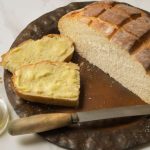A Guide to Buying and Cooking With Konjac Noodles
Commonly called shirataki noodles, konjac noodles are noodles made from the corm of the konjac yam. It's a simple, almost translucent noodle that takes on the flavor of whatever it's paired with.

Fast Facts
Other Names: Shirataki noodles, miracle noodles, devil's tongue noodles, and yam noodles
Places of Origin: Japan, China, and Southeast Asia
Main Components: Glucomannan flour made from the konjac yam, water, and slaked lime water
What Are Konjac Noodles?
Made from the corm of the konjac yam, also dubbed the elephant yam, konjac noodles have been a staple in Japanese and Chinese diets for centuries. To make the noodles with this ingredient, the konjac is made into flour mixed with still water and lime water, which is a solution of calcium hydroxide that helps hold the mixture together so it can be sliced into noodles.
The other common name for the konjac noodle is shirataki noodle. It means "white waterfall" in Japanese, a moniker given because the noodles look translucent and almost like cascading water when poured into a bowl. These almost clear noodles don't have much taste. What the food lacks in flavor, it makes up for being a filling ingredient.
Konjac Noodles Vs. Rice Vermicelli
Konjac noodles look a lot like rice vermicelli. Both ingredients are whitish and sometimes have a bit of translucency. As suggested by the name, rice vermicelli is made with rice flour and water, whereas konjac noodles use flour made by the corm of a lily-like flower, water and lime water. These noodles have both been used in Asian cooking for centuries, though rice vermicelli hails from China and konjac noodles are believed to have been created in Japan.
When shopping for rice vermicelli make sure it says "rice" on the package. There's also Italian vermicelli that looks similar and is made with semolina flour. Konjac noodles may also be found under the name shirataki, but there's no variation on how it's made. Both these noodles can be eaten hot or cold, and don't have a strong flavor on their own.
Varieties
All konjac noodles are long and white or opaque. Some may look clearer than others. This ingredient can be found in other names including shirataki noodles, miracle noodles, devil's tongue noodles and yam noodles.
Konjac Noodle Uses
In theory there's nothing a regular long noodle can do that a konjac noodle can't, though the later tends to be a little more rubbery and can't cook for as long. The konjac noodle also doesn't have much flavor on its own, instead, it takes on the nuances of sauces, main ingredients and spices. Use it for Asian-inspired noodle dishes, to make a main, served cold and in a salad, or simply mixed with a savory peanut sauce for a quick side plate.
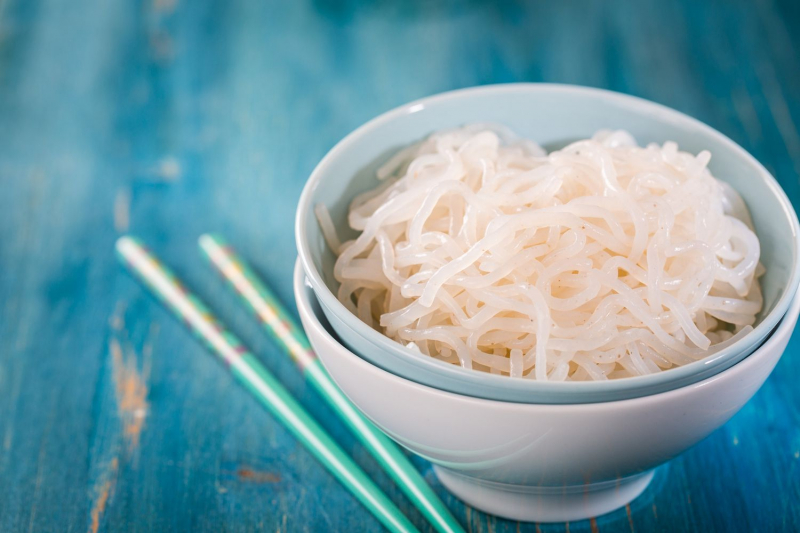
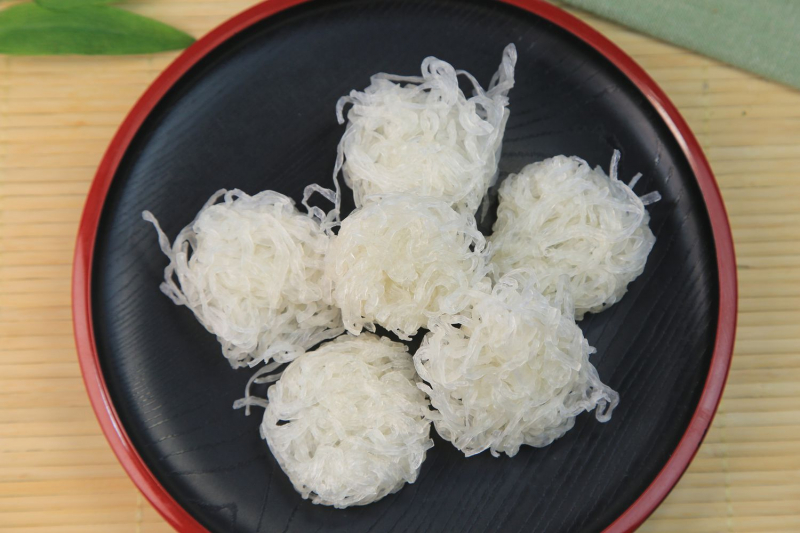

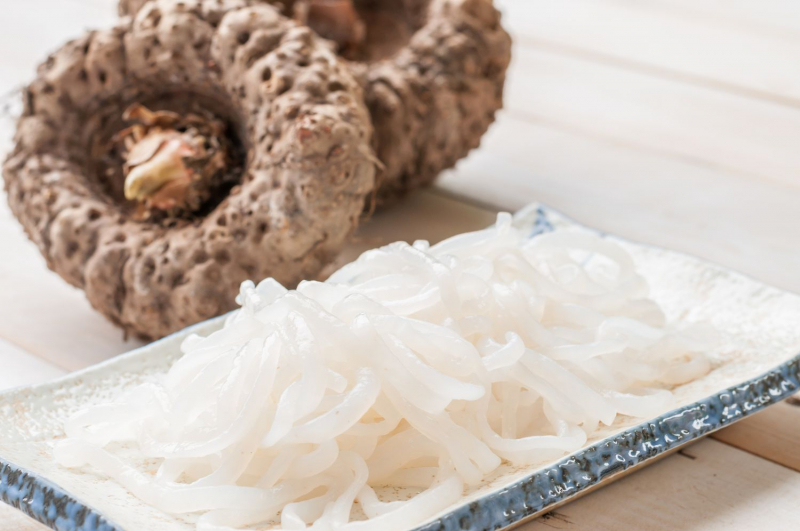
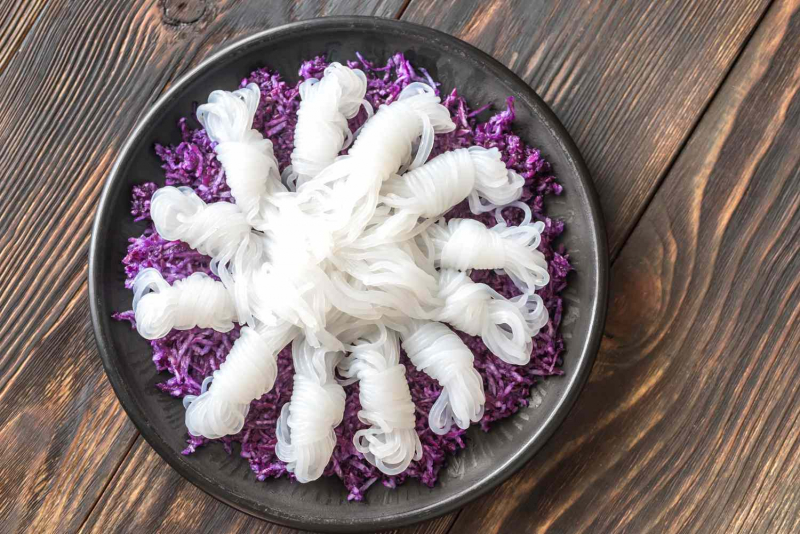
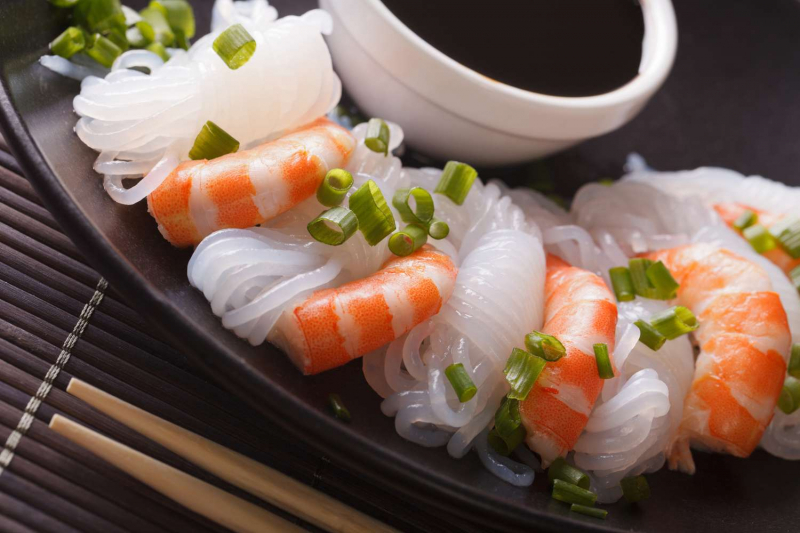
How To Cook With Konjac Noodles
Konjac noodles are known to have a bit a of smell and rubbery texture, but this aspect can easily be avoided if cooked right. When opening a package of the noodles make sure to rinse them before boiling. Then boil on high for about three minutes. Next, drain the noodles and then pan-fry them without added oil for five to seven minutes, making sure as much water evaporates without the noodles drying out. This helps with the slightly rubbery texture. Next, the noodles are ready to add to the vegetables, meat, and sauces. They can also be prepared just by boiling, though it's best to keep it quick and under three minutes.
What Do Konjac Noodles Taste Like?
On their own konjac noodles don't have much flavor. Think of this ingredient as a blank slate that will taste like whatever sauces or spices are cooked with them.
Konjac Noodles Recipes
Go ahead and substitute konjac noodles for the starch in many Asian dishes. They are closest to rice noodles in taste and texture and hold up well in many meals. However, avoid using konjac noodles in soups, because they are made mainly of water this ingredient tends to dissolve quickly when submerged or become rubbery and almost gelatinous.
- Spicy Sichuan Konjac Noodle
- Mango and Beef Rice Noodle Salad
- Japanese Noodle Dipping Sauce
Where To Buy Konjac Noodles
The best place to source konjac noodles is in an Asian market. Some health food stores will also carry this type of food. But for more variety, the local Japanese or Chinese grocer or an online shop are the best bets. Most of the noodles come dry, though sometimes they are kept fresh in a sealed package with water.
How to Store Konjac Noodles
Because these noodles are made mostly of water, the shelf life isn't as long as other varieties. Keep dry and in a dark, cool pantry until ready to use. Most konjac noodles will need to be cooked within a year of purchasing. Wet-stored noodles need to be eaten sooner, and once cooked, this food should be consumed within days.
